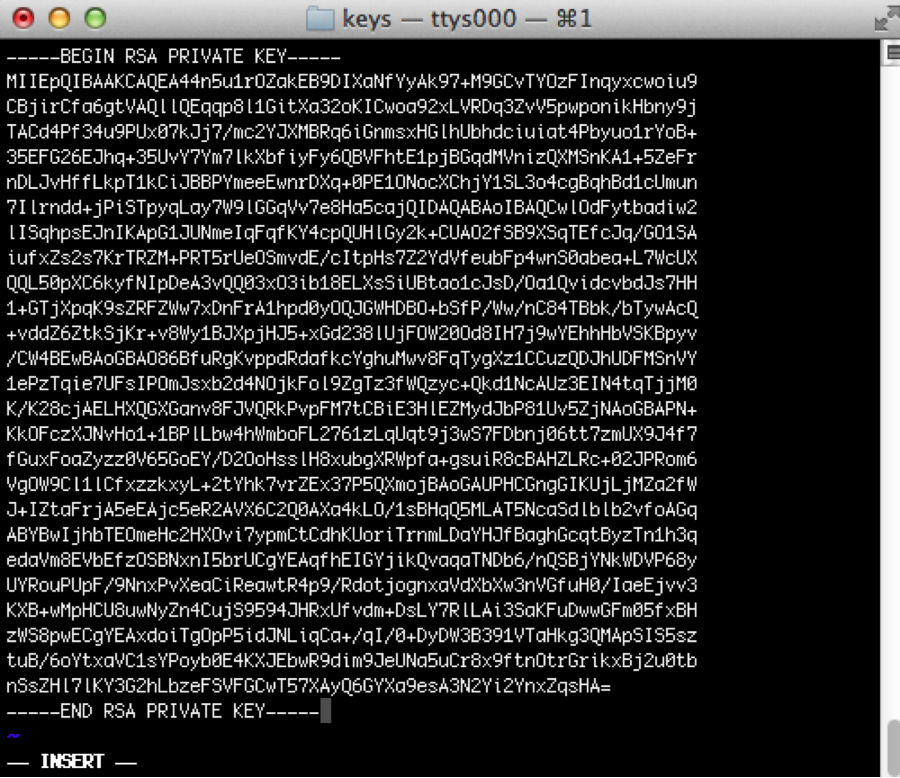
- #Mac ssh server setup with public key how to#
- #Mac ssh server setup with public key mac os x#
- #Mac ssh server setup with public key mac os#
- #Mac ssh server setup with public key install#
- #Mac ssh server setup with public key password#
If this fails to work for you, please see the link on the left for Notes/Bugs/Fixes and run the client/server in debug mode to attempt to diagnose the problem.
#Mac ssh server setup with public key password#
The benefits for this is first that you don’t need to have your SFTP/SSH password saved and given out to every developer.
#Mac ssh server setup with public key how to#
In this article we’ll show how to convert your SSH key to a SFTP format for use with your (S)FTP client.
#Mac ssh server setup with public key mac os#
reg add "hklm\Software\Microsoft\Windows NT\CurrentVersion\Winlogon\SpecialAccounts\UserList" /t REG_DWORD /v sshd_server /d 0 Automatic authentication using SSH keys can be set up from a Mac OS / Linux computer easily. reg add "hklm\Software\Microsoft\Windows NT\CurrentVersion\Winlogon\SpecialAccounts\UserList". reg add "hklm\Software\Microsoft\Windows NT\CurrentVersion\Winlogon\SpecialAccounts". If the sshd_server being a login name choice is bothersome to you, you can mask the display of that usernname with the following registry modifications (Vista+) connect to the server: 'ssh where you should be prompted for the private key password and then connected. id_dsa.pub should be in the server $HOME/.ssh/authorized_keys file (if your id_dsa.pub is the only entry you can just call the file authorized_keys, if it isn't the only entry, then append it to authorized_keys). id_dsa should be in the client $HOME/.ssh/id_dsa. then copy id_dsa.pub to $HOME/.ssh/authorized_keys on the server (and remove id_dsa.pub from the $HOME/.ssh on the client). If you modified /etc/sshd_conf, from an administrator cmd prompt or using the service control manager Choose Ubuntu Server 18.04 LTS for this example, but you can choose recent versions of other Linux distros and look at VS Codes supported SSH servers. #Mac ssh server setup with public key install#
Install under the SSHD_SERVER account (you should also set the password to something other than the default). Make sure you have installed openssh with the following options. It turns out to be pretty easy to do and requires only a few changes Type it in and hit enter.How to use Public Key exchange on Windows OpenSSH (sshd)Ī number of people have asked how to setup public key support for opensshd.ĭue to the occasional emails I've received on the topic, I wanted to figure Ssh the first time connecting, a popup will appear asking for your password to the private key. Close out any connections to your server. Now that we have everything that we need set up, we can test our SSH connection. Save the file and then disconnect from your server. Keep any values that are in there already and paste your public key on the next available line. Once you are connected to your server, run: You will obviously need to replace YOUR_USERNAME with the proper username and YOUR_HOST with your server IP or a domain that resolves to that IP. Since we do not have ssh set up yet, you will either need to connect by using a password, or using the console in something like Digital Ocean. Your public key is named id_rsa.pub and your private key is named id_rsaĬopy the entire thing starting from and including ssh-rsa. 2/5 in a series on SSH and key pair authentication. Great! You have now created your ssh key! What this command did is create a public key and private key. A tutorial on configuring SSH Server to Authenticate with Private/Public Keys using Ubuntu Linux. Type in a secure password, and hit enter. Next, it will ask you for a password to protect your private key. This doesn’t authorize all users of the computer to have SSH access. To set up key-based SSH, you must generate the keys the two computers will use to establish and validate the identity of each other. #Mac ssh server setup with public key mac os x#
Hit enter on the first question it asks you about where to store the file. The following outlines the process of setting up key-based SSH login on Mac OS X and Mac OS X Server. Open up terminal and run the following command: How do we set up SSH?įor this tutorial I am going to assume you are on a mac.

This time it won’t ask you for a password. Recheck Remote Login configuration again to restart ssh server on your macOS. touch /.ssh/authorizedkeys Enter your other machines’ public key in authorizedkeys file.

For every server you want to connect to, you provide it your public key. Create authorizedkeys file if you don’t have one. The private key acts sort of like a password for your public key.

When you generate an SSH key, you generate both a public key and a private key. It is more secure than the common password, and actually makes connecting much easier. SSH is an industry standard used to connect to servers.







 0 kommentar(er)
0 kommentar(er)
